Legendary monuments that no longer exist
History is peppered with tales of magnificent structures that once stood as testaments to human ingenuity and ambition, only to be reduced to whispers of memory. These vanished wonders have an allure that captures our imagination, inviting us to ponder the stories and cultures behind them. From towering statues to expansive gardens, the lost monuments of our world continue to inspire awe, even in their absence. They remind us of the impermanence of humanity’s greatest achievements.
The Colossus of Rhodes: A Giant Gone with the Wind

Standing over 30 meters tall, the Colossus of Rhodes was a marvel of ancient engineering, erected to celebrate the island’s victory over Cyprus. Crafted by the sculptor Chares of Lindos, it overlooked the harbor of Rhodes for around 54 years until an earthquake toppled it in 226 BC. Despite its brief existence, the Colossus remains one of the Seven Wonders of the Ancient World, symbolizing the resilience and creativity of the Greeks.
The Lighthouse of Alexandria: The Beacon that Faded Away
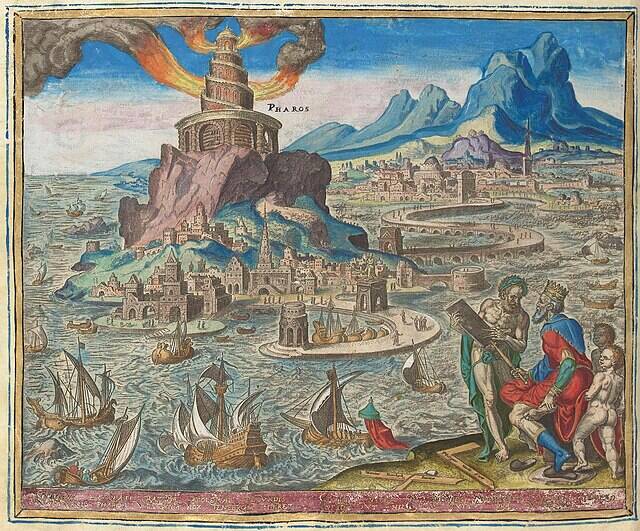
Guiding sailors safely to harbor, the Lighthouse of Alexandria was one of the tallest structures of its time, reaching approximately 328 feet. Built on the small island of Pharos, it served as a prototype for all subsequent lighthouses. Earthquakes in the 12th and 15th centuries led to its eventual collapse, but its legacy as a beacon of hope and innovation lives on in the modern lighthouses that light up our coasts today.
The Statue of Zeus at Olympia: A Godly Marvel No More
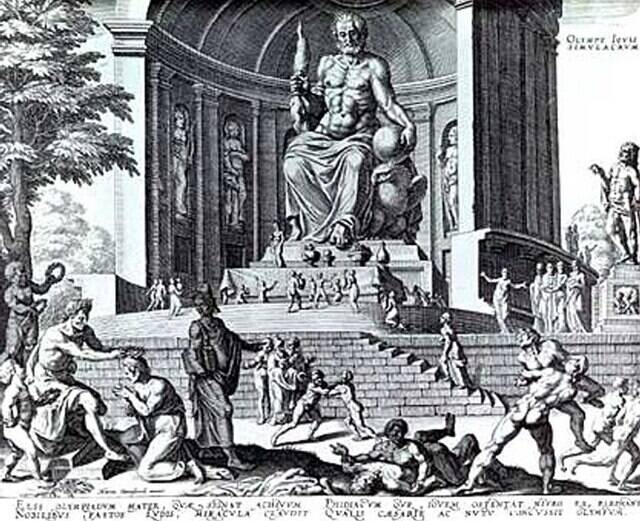
The Statue of Zeus at Olympia was an awe-inspiring tribute to the king of the Greek gods, crafted by the renowned sculptor Phidias. Measuring 39 feet tall, it was adorned with ivory and gold, seated majestically in the Temple of Zeus. Sadly, it was lost to history, possibly destroyed by fire in the 5th century AD. Its grandeur survives in the stories and artistic depictions that have been passed down through generations.
The Hanging Gardens of Babylon: Myth or Misplaced Paradise?
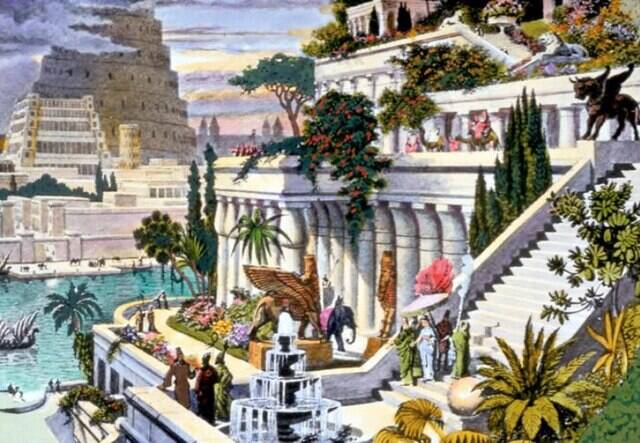
The Hanging Gardens of Babylon are often shrouded in mystery, with debates about their actual existence. Described as a lush, terraced garden, they were supposedly built by King Nebuchadnezzar II for his homesick wife. Despite a lack of concrete archaeological evidence, they continue to captivate the imagination, representing a vision of paradise on earth. Whether myth or reality, the gardens symbolize the human desire to create beauty in the world.
The Temple of Artemis at Ephesus: Once a Glorious Shrine
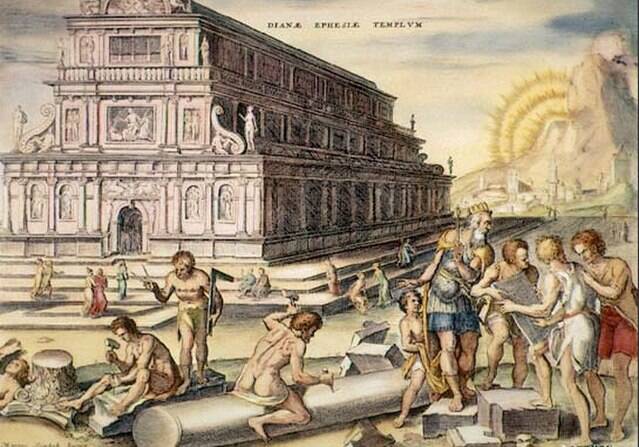
The Temple of Artemis at Ephesus was a stunning tribute to the goddess of the hunt, completed around 550 BC. Measuring 377 feet in length, it was considered one of the Seven Wonders of the Ancient World. Despite being destroyed and rebuilt multiple times, it was finally razed by a mob in 401 AD. Today, only fragments remain, but its scale and artistry continue to influence architectural design across the globe.
The Mausoleum at Halicarnassus: Tomb Turned to Dust
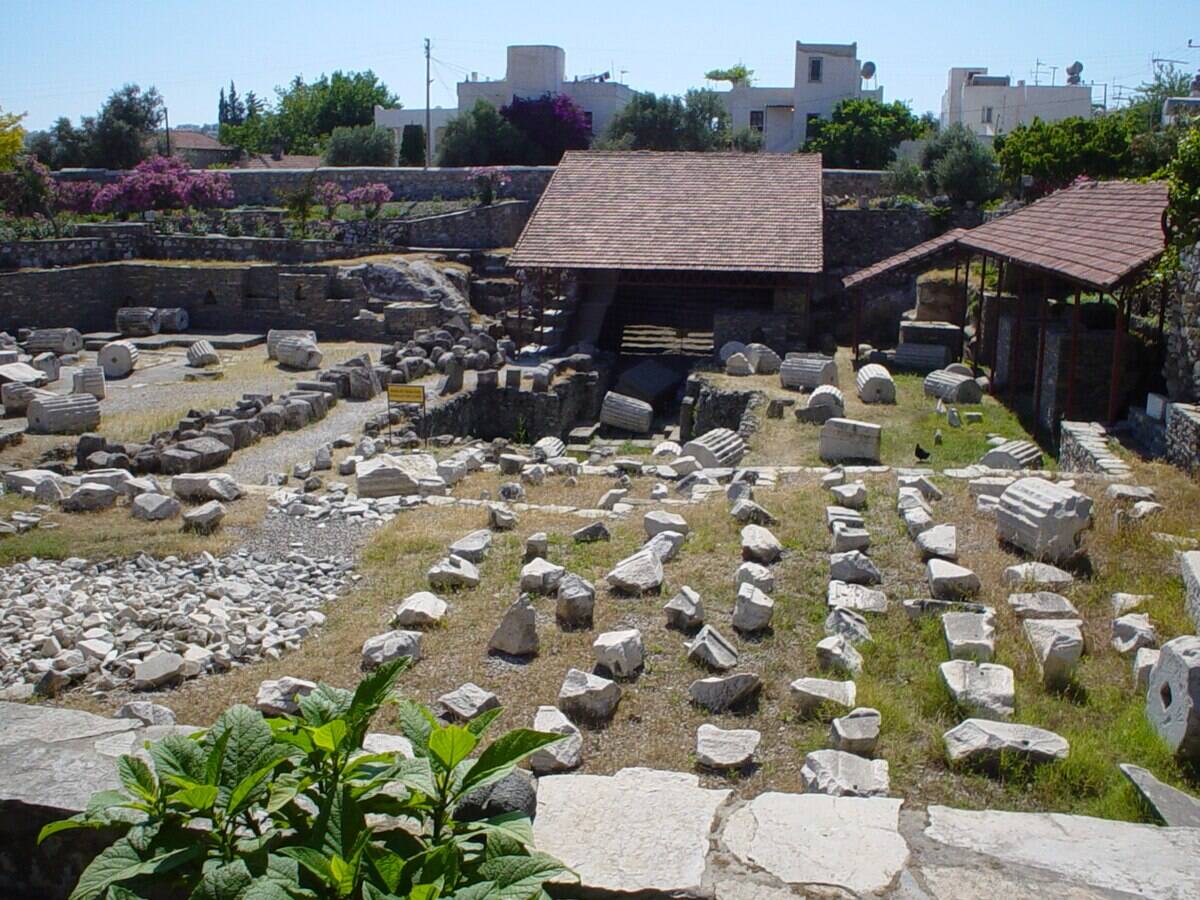
Built for Mausolus, a satrap of the Persian Empire, the Mausoleum at Halicarnassus was a monumental tomb that stood around 147 feet high. Its architectural elegance and grandeur made it one of the Seven Wonders of the Ancient World. Over time, earthquakes and other factors led to its ruin. The term ‘mausoleum’ has since become synonymous with grand tombs, a testament to its lasting impact on cultural memory.
The Buddhas of Bamiyan: A Tragic Tale of Destruction
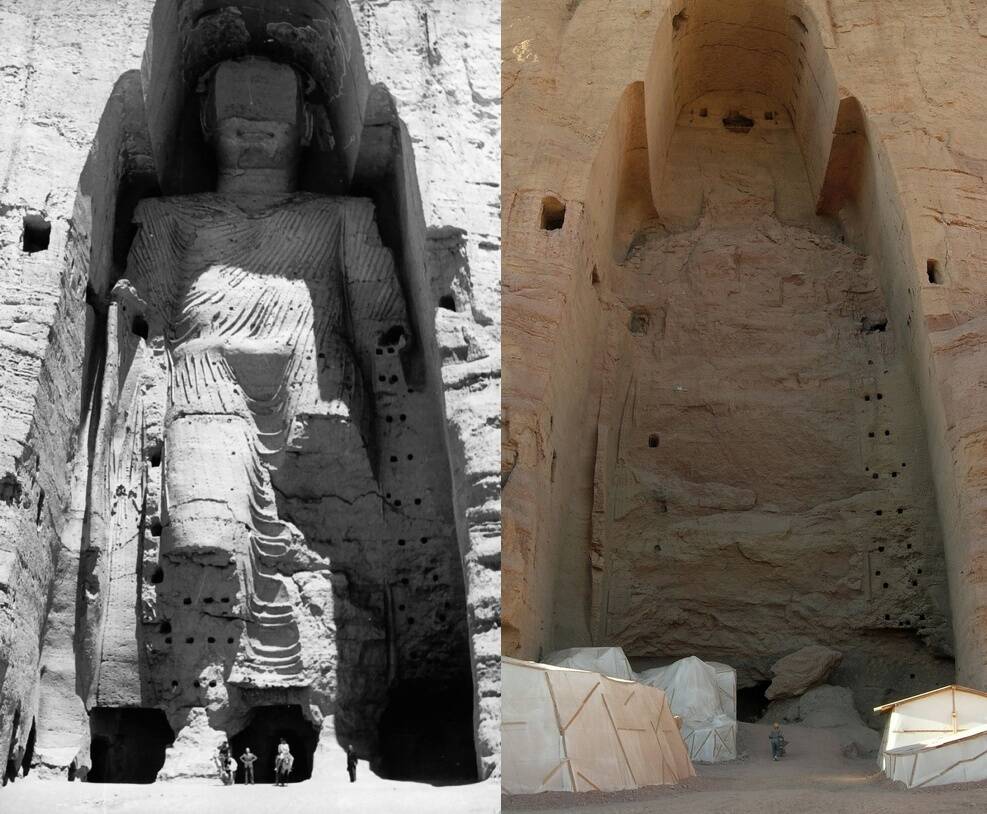
Carved into the cliffs of the Bamiyan Valley in Afghanistan, the Buddhas of Bamiyan were once the tallest standing Buddhas, measuring 180 and 124 feet respectively. Dating back to the 6th century, they stood for over a millennium before being destroyed by the Taliban in 2001. Their loss was a devastating blow to cultural heritage, but efforts to preserve and digitally reconstruct the site continue, keeping their memory alive.
The Old Summer Palace: The Opulence of China in Ruins
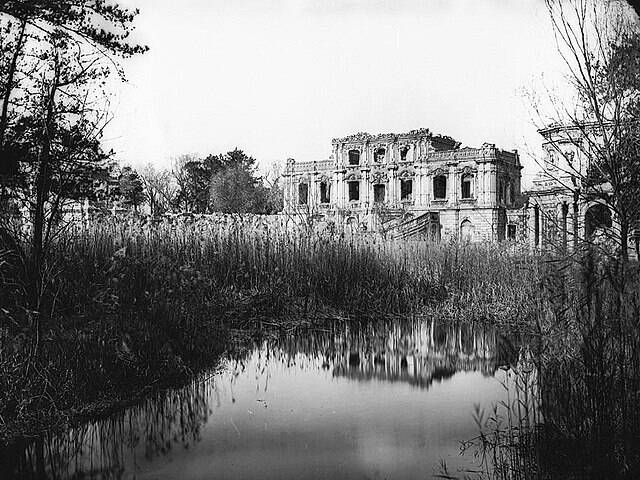
The Old Summer Palace, or Yuanmingyuan, was a masterpiece of Chinese architecture and landscaping, covering 350 hectares. Built in the 18th century, it was home to a vast collection of art and antiquities. In 1860, during the Second Opium War, British and French troops looted and burned it to the ground. Today, its ruins are a somber reminder of colonial exploitation and the fragility of cultural treasures.
The Library of Alexandria: Lost Knowledge and Ancient Wisdom
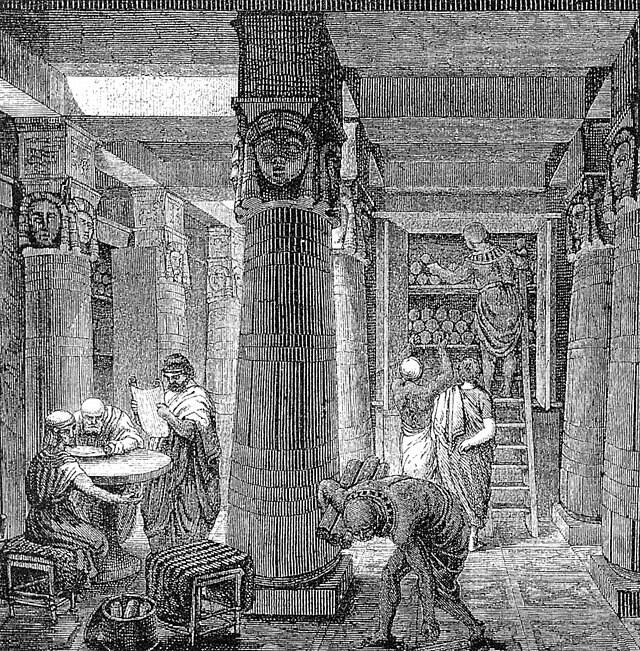
The Library of Alexandria was a beacon of knowledge in the ancient world, housing countless scrolls and manuscripts. Founded in the 3rd century BC, it aimed to compile all the world’s knowledge. Its destruction, possibly by fire during Julius Caesar’s siege or later events, symbolizes the loss of immense cultural and scientific knowledge. Despite its tragic end, the library’s legacy continues to inspire the pursuit of learning and scholarship.
The Crystal Palace: A Victorian Spectacle Shattered

The Crystal Palace was a marvel of Victorian engineering, constructed for the Great Exhibition of 1851 in London. Made of cast iron and glass, it was an architectural triumph that showcased the industrial innovations of the time. In 1936, a fire reduced it to ashes, marking the end of an era of grand exhibitions. Its pioneering design, however, paved the way for modern architecture, influencing structures like greenhouses and shopping malls.
The Berlin Wall: A Monument of Division Now United

Erected in 1961, the Berlin Wall was a stark symbol of Cold War division, separating East and West Berlin. Spanning 96 miles, it was a physical and ideological barrier that stood until 1989. Its fall marked a pivotal moment in history, symbolizing the end of communist rule in Eastern Europe. Today, fragments of the wall serve as poignant reminders of the past, while Berlin thrives as a united city, symbolizing hope and reconciliation.
The Templo Mayor: The Heart of the Aztec Empire
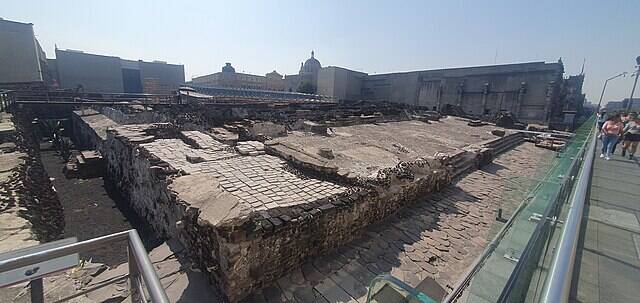
The Templo Mayor was the main temple of the Aztec capital, Tenochtitlan, located in present-day Mexico City. Dedicated to the gods Huitzilopochtli and Tlaloc, it was the epicenter of Aztec religious life. Destroyed by the Spanish in 1521, its ruins were rediscovered in the 20th century. Excavations have unveiled a wealth of artifacts, offering invaluable insights into Aztec culture and history, and reigniting interest in pre-Columbian civilizations.
The Great Zimbabwe: A Kingdom’s Stone Legacy Dismantled

The Great Zimbabwe was a medieval city and the capital of the Kingdom of Zimbabwe during the late Iron Age. Renowned for its impressive stone structures, including the Great Enclosure, it was a center of trade and culture. By the 15th century, it was largely abandoned, possibly due to environmental factors. Its mysterious ruins remain a symbol of African heritage and ingenuity, challenging historical narratives and inspiring pride in a rich cultural legacy.
The City of Pompeii: A Vibrant Life Buried in Ash
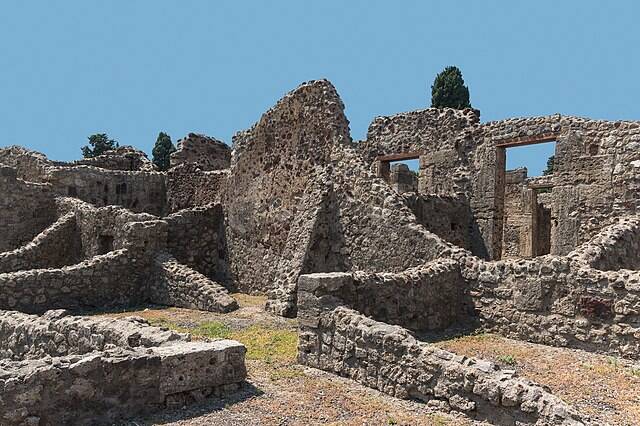
In AD 79, Mount Vesuvius erupted with catastrophic force, burying the city of Pompeii under meters of ash. The disaster preserved the city in remarkable detail, providing a snapshot of Roman life frozen in time. Rediscovered in the 18th century, Pompeii has become one of the world’s most significant archaeological sites. The ongoing excavations continue to reveal new insights into daily life in ancient Rome, drawing millions of visitors eager to walk its storied streets.
The Palmyra Arch of Triumph: A Syrian Heritage Erased
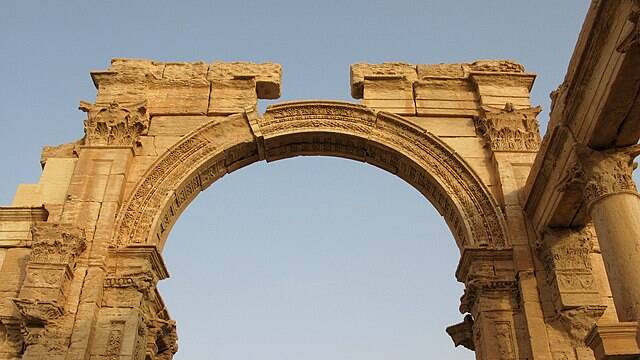
The Palmyra Arch of Triumph was a stunning example of Roman architecture, located in the ancient city of Palmyra in Syria. Built in the 3rd century AD, it was a symbol of the city’s significance as a trade hub. In 2015, it was destroyed by ISIS, a tragic loss to cultural heritage. Efforts to digitally reconstruct the arch highlight the importance of preserving history, even in the face of destruction, ensuring its legacy endures.
The Temple of Bel: An Ancient Sanctuary Demolished

Situated in the heart of ancient Palmyra, the Temple of Bel was one of the most significant religious structures of the 1st century AD. It served as a testament to the cultural fusion of Greco-Roman and Mesopotamian influences. In 2015, it was destroyed by ISIS, sparking international outcry. While its physical form may be lost, its historical and spiritual significance continues to resonate, inspiring efforts to preserve and protect our global heritage.
The Great Mosque of al-Nuri: A Minaret that Stood Tall
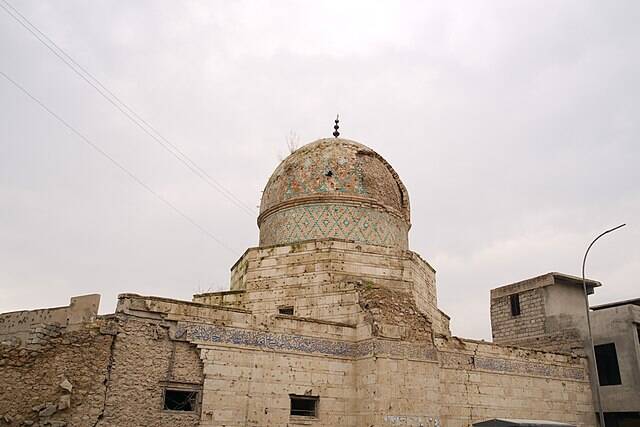
The Great Mosque of al-Nuri, known for its iconic leaning minaret, was a landmark of Mosul, Iraq. Built in the 12th century, it was a vital part of the city’s cultural and religious identity. In 2017, it was destroyed during the conflict with ISIS. Reconstruction efforts are underway, symbolizing the resilience and determination of the Iraqi people to rebuild and preserve their heritage amidst turmoil and adversity.
Nimrud: A Mesopotamian Gem Lost to Time
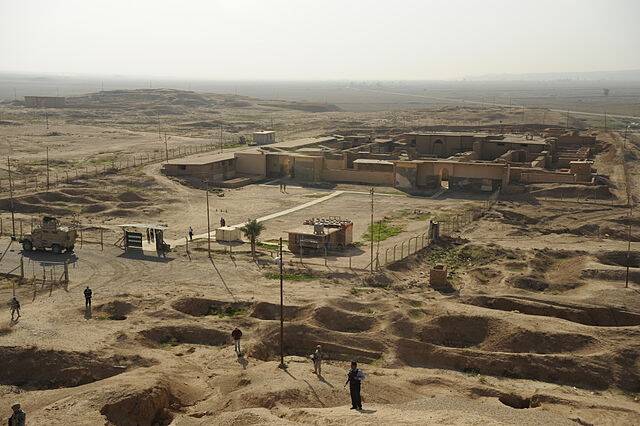
Nimrud, an ancient Assyrian city, was once the capital of the empire under King Ashurnasirpal II. Known for its palaces, temples, and impressive reliefs, it was a center of power and culture. In recent years, it suffered extensive damage during conflict in the region. Despite this, ongoing archaeological efforts continue to uncover its treasures, highlighting the resilience of history and the importance of preserving our shared human past.



